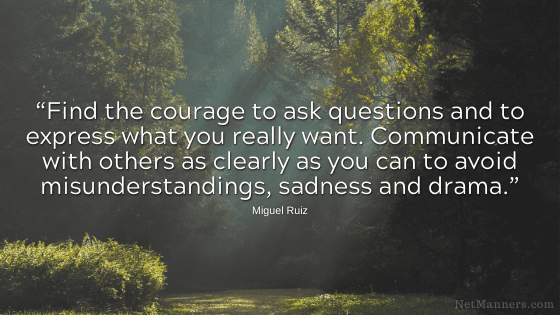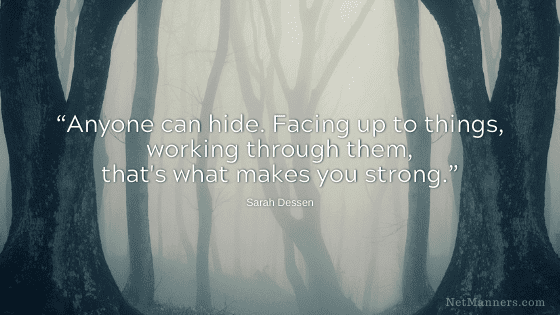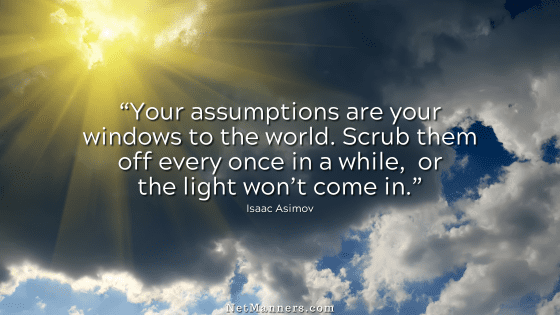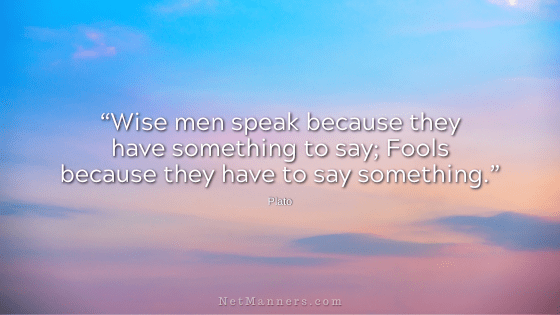Using Ellipses (…) In Email

I remind folks to use proper sentence structure and grammar when composing their emails, as my regular readers know. I pretty much leave it at that — I am not a grammar writer or an English language major and do not claim to be one.
I constantly work on my writing skills and am amazed at how much there is to learn about communicating effectively with the written word. That’s why I use Grammarly on everything I write on and off-line.
I’ve had several requests recently to discuss using “trailing periods” at the end of sentences in emails. These are called ellipses.
Here is one example:
Netiquette or “NETwork etIQUETTE” is about using technology appropriately. That includes email, which is a written communication requiring clarity. So naturally, that would also include proper sentence structure and grammar.
When it comes to using ellipses properly, that applies to any written communication, including email. So as with anything to do with Netiquette — proper writing skills are included.
Ending a select phrase or sentence with “…” could mean different things depending on the content and the overall tone of the email in question. When to use ellipses is also important if you are into grammar.
Grammatically Correct Use of an Ellipse
- Indicate the omission of some text.
- Reflect a pause in dialoge.
[Full Explanation of Proper Ellipse Use]
I do use ellipses on occasion when apropos — in my mind. But Grammarly constantly corrects me on its use as it is recommended to avoid using an ellipse unless necessary. And, it is always only three periods no more.
With that said, excessive periods at the end of every sentence lends to cryptic communications and isn’t grammatically correct. But I don’t think your friend is concerned about grammar. Instead, I believe it is probably her style of communicating.
Just like anything that has to do with how you use technology, discretion is critical. In my view, ellipses indicate the opposite of “having something to say but won’t.” Instead, the use of an ellipse is reflecting the obvious — there is no more to say.
When I end a sentence with “…,” it is because I’m involved in an ongoing conversation where I don’t know what more I can say on the topic. My way of pausing the conversation.
Using Ellipses with Discretion
For example, I’ll use an ellipse when I keep getting asked the same thing in different ways by the same person as though that would change my answer. So, I’ll end the sentence with “…” insinuating “what more can I say…” or “I’m at a loss…” type of situation.
If you feel the sender may “have something else they want to say but won’t,” what gives you that impression? Maybe consider asking for clarification as to what she means.
She may advise “nothing,” as that is just her style. I’ve written a lot about not assuming.
Another site visitor communicated to me that they found ellipses “insulting.” I’m still am not clear where they got that impression from the use of an ellipse. Maybe they, too, know the other side is intimating they have nothing more to say?
In this case, it is probably more of a relationship issue vs. an ellipse issue. There are probably other issues in the relationship or their email communications with these particular senders that have led to that impression. But, primarily because they do know what they mean — the ellipses are just the frosting on the cake.
My number one piece of advice when it comes to impressions, perceptions, and intent? If you are unsure of someone’s meaning using ellipses, ask for clarification before assuming and reacting.
This proves my point about how folks will read things into your email communications and why you must carefully craft your communications to avoid that. I think some may be reading more into these tiny dots due to other signals in the email that deserve more attention. I’m just sayin’…







